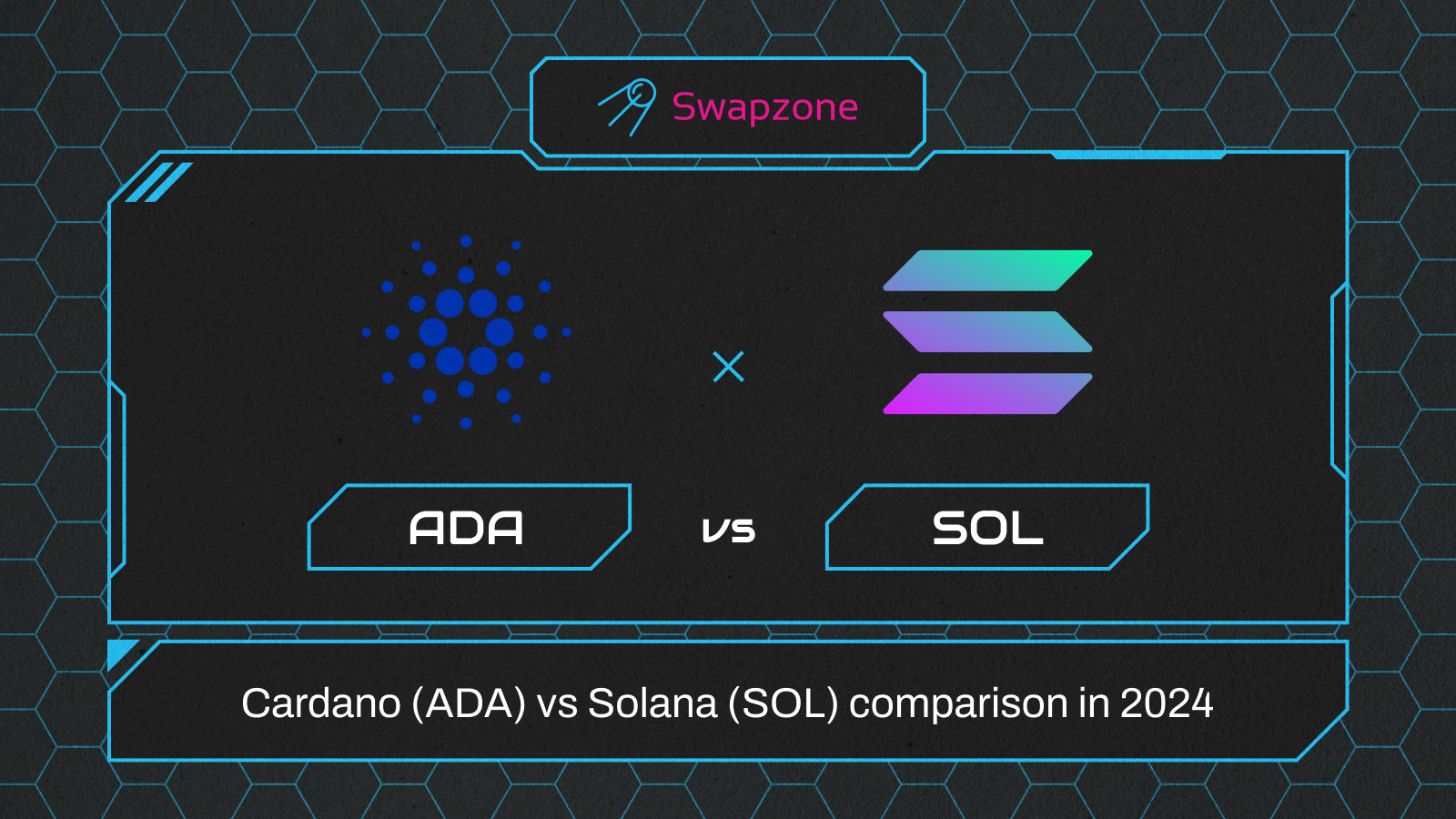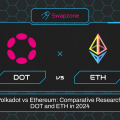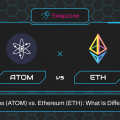As blockchain technology continues to evolve, Ethereum faces increasing competition from emerging blockchain platforms like Cardano and Solana. In this article we will be comparing Cardano vs Solana, exploring their potential to disrupt Ethereum’s dominance. Authored by a company specializing in MVP and blockchain projects development, the article examines technological innovations, market impact, and future outlook.
Cardano, with its ADA cryptocurrency, and Solana, represented by SOL, offer advanced features such as smart contracts, dApps (Decentralized Applications), DeFi (Decentralized Finance), and NFTs. Solana’s Proof-of-History mechanism ensures high throughput. Meanwhile, Cardano’s focus on decentralized banking and scalability presents unique advantages.
The analysis seeks to uncover which platform holds the greatest promise for revolutionizing the blockchain landscape. By evaluating factors such as security, scalability, and community adoption, readers gain insights into the dynamic competition reshaping the industry.
Overview of Cardano and Solana
Cardano and Solana, although both established in the cryptocurrency space, differ in several aspects, beginning with their founding. Cardano was founded in 2017 by Charles Hoskinson, co-founder of Ethereum platform. Solana was founded in 2020 by Anatoly Yakovenko, a former engineer at Qualcomm.
In terms of native tokens, both platforms support the creation of tokens. However, Solana boasts faster block times, handling up to 65,000 transactions per second, or TPS, with low transaction costs. Cardano, on the other hand, focuses on scalability and interoperability.
Regarding consensus protocols, Solana uses a Proof-of-History (PoH) combined with Proof-of-Stake (PoS) mechanism. Cardano takes a unique Ouroboros PoS model for validation.
Both platforms cater to DeFi ecosystems, providing various programming languages for developers. While Solana emphasizes speed and efficiency, Cardano prioritizes security and sustainability.
In summary, Cardano and Solana offer distinctive features and approaches, catering to different needs within the crypto community. Their similarities lie in their contributions to the blockchain space. And their differences showcase the diversity and innovation within the industry.
| Cardano | Solana | |
| Total Supply of Coins | 45,000,000,000 ADA | 572,594,662 SOL |
| Current Available Supply | 36,728,716,299 ADA | 444,187,509 SOL |
| Market Capitalization | $23.1B | $84.5B |
| Average Transaction Fee | $0.07 | $0.005 |
| Average Block Time | 20 seconds | 0.4 – 0.8 seconds |
| Consensus Mechanism | Proof-of-Stake (PoS) | Proof-of-History (PoH) |
| Primary Use | Smart contracts, dApps and protocols | The scalability of blockchain technology |
| Founders | Charles Hoskinson | Anatoly Yakovenko |
Detailed Comparison of Solana and Cardano
Cardano and Solana have emerged as formidable contenders to address the scalability and performance challenges faced by Ethereum. With unique visions and innovative approaches, they aim to revolutionize the decentralized ecosystem. Let’s delve into the histories, technical architectures, consensus mechanisms, community engagement, and their growing influence in emerging sectors like GameFi and NFTs.
History and Background
Cardano and Solana, two prominent blockchain platforms, were founded with distinct visions and approaches to address the limitations of Bitcoin and Ethereum. Cardano blockchain was founded by Charles Hoskinson, one of Ethereum’s co-founders. He was focusing on creating a more secure and scalable blockchain infrastructure and decentralization.
In contrast, Solana blockchain was founded by Anatoly Yakovenko, with the aim of significantly increasing transaction speeds and throughput compared to existing blockchain platforms. Solana’s vision revolves around leveraging innovative technologies to overcome scalability challenges and enable high-performance decentralized applications.
Both projects secured funding through various means, with Cardano utilizing an initial coin offering (ICO) and Solana attracting investment from prominent venture capital firms. Their launches followed distinct timelines, with Cardano’s development characterized by a methodical approach to protocol upgrades and Solana’s rapid deployment of its blockchain infrastructure.
These platforms have been hailed as potential “Ethereum killers” due to their ambitions to address Ethereum’s scalability issues and offer improved performance. However, they each approach this goal from different angles, reflecting the diverse visions of their respective founders and the unique technological solutions they bring to the table.

Technology and Design Architecture
Solana and Cardano exhibit distinct technical architectures aimed at addressing blockchain challenges. Solana network stands out with its single-layer design to achieve unparalleled transaction speeds through parallel processing. That fosters to process transactions in parallel. Solana uses innovative technologies like Proof-of-History, or PoH. This architecture emphasizes efficiency and scalability and positions Solana as a high-performance blockchain platform.
In contrast, Cardano network adopts a layered approach, prioritizing security and decentralization. Its architecture consists of multiple layers. Each serves specific functions to ensure robustness and flexibility. Cardano focuses on smart contracts and ADA. ADA is the native token of Cardano, named after Ada Lovelace. Its emphasis on rigorous academic research and formal verification contributes to a more secure and reliable blockchain ecosystem.
In contrast, the Cardano network adopts a multi-layered approach, with a focus on security and decentralization. Its architecture consists of the Cardano Settlement Layer and the Cardano Computational Layer. Each layer serves specific functions, providing robustness and flexibility. The Settlement Layer handles transactions and ADA cryptocurrency. And the Computational Layer is dedicated to smart contracts and other computational tasks. Cardano’s rigorous academic research and formal verification contribute to a secure and reliable blockchain ecosystem across both layers.
While Solana’s architecture emphasizes speed and throughput, Cardano’s layered approach prioritizes decentralization and resilience. Both platforms represent significant innovations in the blockchain space. They address key limitations of existing technologies in their unique ways. Their contrasting architectures reflect different priorities and philosophies, catering to diverse needs within the blockchain community.

Consensus Mechanism and Performance
Cardano and Solana use innovative consensus mechanisms to ensure transaction speed and security, albeit through different approaches. Cardano utilizes the Ouroboros protocol. Ouroboros functions as a Proof-of-Stake protocol, or PoS, distributing network control among stake pools.
These pools, comprised of node operators, possess the required infrastructure for maintaining a reliable connection to the network. In each epoch, comprised of multiple slots, a stake pool is selected as the slot leader. This slot leader is then rewarded for successfully adding a block to the chain within their designated slot.
In contrast, Solana’s consensus mechanism incorporates Proof-of-History, or PoH, a novel approach that timestamps transactions to establish a historical record. However, relying on a centralized source contradicts the ethos of a decentralized system. Solana addresses this challenge through the adoption of an innovative technology known as Proof-of-History. This enables the integration of “timestamps” directly into the blockchain by utilizing a verifiable delay function (VDF).
| “Every block producer has to crank through the VDF, this proof of history, to get to their assigned slot and produce a block,” – Anatoly Yakovenko, co-founder of Solana Labs. |
Cardano’s Ouroboros emphasizes security and decentralization through its PoS model and slot leader selection process. And Solana’s PoH prioritizes transaction speed by optimizing the ordering and validation process.
The impact of these mechanisms is reflected in the transaction speeds of each platform. Solana, with its PoH and parallel processing capabilities, boasts impressive transaction speeds, making it suitable for high-frequency applications. Cardano, on the other hand, prioritizes security and decentralization over transaction processing, although advancements are being made to enhance its scalability.
Ultimately, the choice between Cardano’s ADA and Solana’s SOL tokens may depend on the specific requirements of a given project, balancing factors such as transaction speed, security, and decentralization.
Development and Community Support
Cardano and Solana, both prominent blockchain platforms, have taken distinct paths in their development cycles and community engagement, shaping their popularity and appeal within the crypto market.
- Funding Mechanisms:
- Cardano: Relied on ICO (Initial Coin Offering) for development financing, garnering significant community support.
- Solana: Attracted substantial investment from venture capital firms, enabling rapid development and marketing efforts.
- Smart Contract Functionality:
- Cardano: Prioritizes security and formal verification, leading to a methodical approach and slower rollout of smart contract capabilities.
- Solana: Emphasizes speed and efficiency, rapidly deploying smart contract functionality to support a wide range of DeFi applications.
- Development Approach:
- Cardano developers use a methodical approach that fosters robustness and reliability in dApps and DeFi ecosystems. As well, it fosters a strong and engaged community.
- Solana: Developer-friendly environment with rapid deployment, incentivizing developers through support programs and high-performance solutions.
- Interoperability and Sustainability:
- Cardano: Focuses on interoperability to create seamless connections with other blockchains, fostering collaboration and innovation.
- Solana is popular due to sustainability through developer incentives and support. It contributes to adoption within the blockchain ecosystem.

GameFi and NFTs
Cardano and Solana are increasingly making strides in the GameFi and NFT spaces, each with unique ecosystems and notable projects. Cardano’s ecosystem is burgeoning with promising developments in NFT projects and marketplaces. Solana has gained attention for its high-volume transactions and vibrant NFT community. From innovative gaming experiences to digital art marketplaces, both platforms offer diverse opportunities for creators and collectors alike.
Cardano and Solana gaming fields have made significant strides in the GameFi and NFT sectors. As Ethereum and Polygon NFTs, Cardano ecosystem is growing with NFT projects like Revuto and Cardano Warriors. Solana ecosystem has seen the rise of platforms such as SolSea and Step Finance. These projects contribute to the overall volume and activity within their respective ecosystems.
In terms of marketplaces, Cardano and Solana each have unique platforms that cater to NFT enthusiasts and gamers. Both platforms foster a vibrant NFT marketplace and support GameFi projects. Thus, they strengthen their positions in the rapidly evolving blockchain space. It attracts users and developers looking to explore new opportunities and engage with innovative digital assets.
Investment Perspective: Cardano vs. Solana
Investments in Cardano and Solana imply several factors. Lower transaction fees play a crucial role, indicating better scalability and usability. Both platforms utilize different blockchain validation methods. Cardano employs a Proof-of-Stake (PoS) mechanism, while Solana uses a unique Proof-of-History (PoH) approach. Understanding these mechanisms is essential for evaluating an investment’s viability.
Smart contracts also contribute to investment decisions, as they enable various use cases and drive adoption. However, volatility remains a concern, and investors should consider historical price trends and price predictions before making investment decisions.
Community engagement is another crucial aspect. A vibrant and supportive community can significantly contribute to a project success. Also, the reputation of the project team and notable investors also play a role in building investor confidence.
Both Cardano and Solana have ambitious roadmaps and are actively engaged in developing their ecosystems. Evaluating these roadmaps and the progress made against milestones is essential for assessing long-term investment potential.
Ultimately, investors must conduct thorough research and analysis before investing in Cardano or Solana. In the dynamic landscape of blockchain, make informed investment decisions based on following factors:
- Transaction fees;
- Blockchain validation methods;
- Smart contract functionality;
- Historical price trends;
- Community engagement;
- Project team reputation;
- Notable investors;
- Roadmap progress.
Final Thoughts: Which is better?
The comparison between Cardano and Solana shows distinct features to consider. Their differences and strengths suggest a more complementary relationship than direct competition. Each platform offers unique use cases and advantages that cater to different priorities within the blockchain space.
Cardano’s emphasis on decentralization and scientific rigor appeals to those prioritizing security and reliability. Its methodical approach, rooted in academic research, positions it as a robust platform for building secure and scalable blockchain solutions. Despite facing technical difficulties in development, Cardano’s committed to a scientific approach to blockchain. Thus, its protocols instill confidence in its future outlook.
On the other hand, Solana’s focus on technical innovations and high throughput addresses the need for speed and scalability in various applications. While facing challenges related to decentralization and network stability, Solana’s rapid development and growing ecosystem suggest promising prospects for the future.
Ultimately, the choice between Cardano and Solana depends on individual priorities and use cases. Those seeking a secure and scientifically validated blockchain may gravitate towards Cardano. Others who prioritize speed and scalability may prefer Solana.
However, both platforms contribute valuable advancements to the blockchain industry and offer opportunities for innovation and growth. As the blockchain landscape continues to evolve, Cardano and Solana are poised to play complementary roles in shaping its future trajectory.
FAQs
Deciding if Solana better investment than Cardano project depends on individual preferences and market analysis. Cardano focuses on sustainability and scalability. Solana is better than Cardano in terms of speed and low transaction costs. It’s recommended to research both projects, thoroughly, consider your investment goals, and consult with financial experts before making a decision.
The future of Cardano looks promising as it continues to develop its blockchain technology. With a strong emphasis on sustainability, scalability, and decentralized governance, Cardano aims to become a platform for various decentralized applications and financial services, potentially leading to broader adoption and utility in the blockchain space.
Predicting whether Solana will outperform Cardano is challenging as both projects have unique strengths and potential for growth. Solana offers high transaction speeds and low costs, attracting developers and users. On the other hand, Cardano’s focus on sustainability and scalability could lead to broader adoption. Monitoring market trends and project developments is crucial in assessing performance.
The future of Solana looks promising, with its high-throughput, low fees, and vibrant ecosystem attracting developers and projects. Continued advancements in technology, scalability, and partnerships may position Solana as a prominent player in the blockchain space, driving further innovation and adoption.
Yes, Solana can be used for NFTs. Its high transaction speeds and low fees make it an attractive platform for creating and trading non-fungible tokens. Several NFT marketplaces and projects have been built on the Solana blockchain, providing artists and collectors with an efficient and cost-effective environment for NFT transactions.


